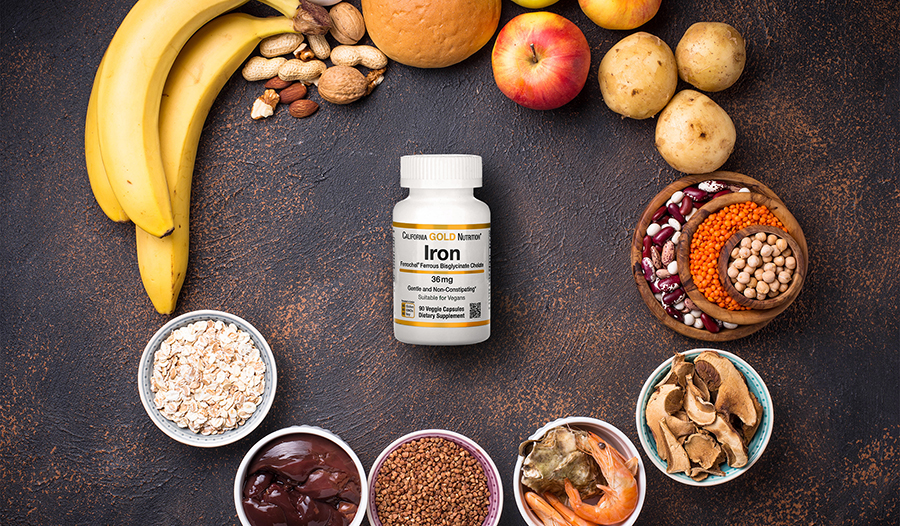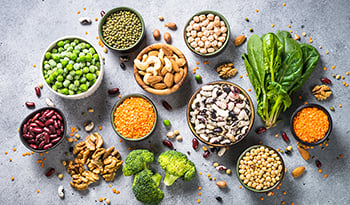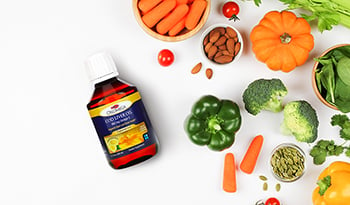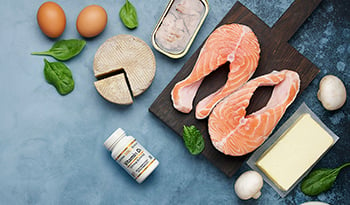Top 3 Foods High in Iron and Signs You May Need More in Your Diet
FERAGAT:Bu blog tanı koymayı hedeflememektedir...
- Bu makalede:
- Types of Iron
- Top 3 Food Sources of Iron
- Other Ways to Improve Iron Absorption
- Side Effects of Iron Supplements
- Who Should Not Take Iron?
- Takeaway

Iron is an essential component of hemoglobin, which is part of red blood cells. Iron deficiency is most common in women of childbearing age (especially those with heavy menstrual bleeding), but also can be important to rule out in small children, people with digestive disorders or inflammatory conditions, people who don’t eat meat, those who participate in regular intense physical training, individuals who donate blood frequently, those with a history of digestive tract surgery such as gastric bypass, and anyone whose symptoms may point toward iron deficiency.
Iron is required for the production of red blood cells, thyroid hormone, dopamine, and optimal immune function. It is especially vital for children and pregnant women to consume adequate iron because low levels can contribute to developmental delays, inadequate growth, behavioral issues, and preterm delivery. Often, supplementation can resolve the deficiency, but sometimes it can be a sign of serious underlying disease. Therefore, healthcare providers should do an investigation to rule out serious illnesses.
Longer-term iron deficiency can lead to iron deficiency anemia when your red blood cell levels are low. Red blood cells are crucial for delivering oxygen and nutrients throughout your body. Other kinds of anemia are caused by deficiencies in copper, vitamin B12, and folate.
Iron deficiency and anemia symptoms may include fatigue, low energy, shortness of breath, chest pain, menstrual issues, restless legs, muscle pain, attention difficulties, hair loss, low stomach acid, cold intolerance, and low mood.
Ask your doctor about a blood test for your iron levels to check if you have iron deficiency. Ferritin, a protein that carries iron around in your bloodstream, is one of the most common tests. It is a separate test from an anemia screening, or a complete blood count (CBC) or hematocrit. Too much iron is toxic; make sure you are properly diagnosed with low iron before taking a supplement.
Types of Iron
Two kinds of iron are available from food, heme iron, and non-heme iron. An omnivore's typical iron intake is about 10%–15% heme iron, but the total amount absorbed is 40% heme iron, which indicates the far higher utility of heme iron.
Non-heme iron is the kind available from plants; it can be difficult to absorb in the intestines. The absorption rate varies depending on a person’s current stores and individual factors.
Heme iron uses a special transporter to get the iron from the intestine into the cells where it is needed. In contrast, non-heme iron is often bound to other compounds that make it harder to transport it to where the body utilizes it.
Top 3 Food Sources of Iron
While a number of foods contain iron, here are the top three options to get iron from food.
1. Molasses
Molasses—a byproduct of sugar cane processing—is an uncommon ingredient with an unusually high iron bioavailability. Blackstrap molasses contains 2.3 mg of iron per tablespoon, and 50%–97% of it is absorbed. Use it in your recipes for gingerbread, baked beans, hot drinks, or meat and vegetable glazes.
2. Meat
Meat is the best place to get the most absorbable form of heme iron. The highest sources include red meat such as beef and lamb, but poultry and seafood are also good sources, especially oysters. About 15%–35% of heme iron from animal products is absorbed in our intestines.
3. Plant-Based Iron
Plant sources of iron include lentils, beans, spinach, nuts, chocolate, and fortified grains and cereals. The amount of iron these foods contain and the amount of iron available for use in our bodies are not the same because plant foods have compounds, known as phytates and polyphenols, that inhibit the intestinal absorption of iron.
Only 2%–20% of non-heme, plant-based iron is actually used by our bodies. Some sources find that organically grown crops contain more iron than conventional. If you follow a diet without or low in meat products, talk to your doctor about an iron blood test to ensure your iron levels are adequate.
Other Ways to Improve Iron Absorption
To increase the iron content of food, you can cook with a cast iron pan. The food will absorb a small amount of iron from the pan. Over time, this can add up enough to keep your levels adequate.
Vitamin C
Vitamin C is well understood to increase absorption of non-heme iron in the intestines. Taking a vitamin C supplement or consuming vitamin C-rich foods at the same time as iron supplements can increase effectiveness.
Calcium
Calcium has conflicting research on inhibiting the absorption of iron. Some studies find that it prevents absorption, while some studies find that it does not. It is likely best to avoid taking calcium supplements at the same time as iron supplements to ensure effectiveness until more research clarifies this potential interaction.
Zinc
Zinc is another critical nutrient that interferes with the absorption of non-heme iron. If iron supplementation is needed long term, taking a zinc supplement at a different time of day may be helpful to maintain overall adequate nutrition.
Vitamin E
Vitamin E can interfere with iron absorption. Therefore, deficiency in vitamin E can exacerbate the side effects of iron supplements, and animal studies have found that vitamin E supplements can minimize the adverse effects of iron supplements.
Coffee, Tea, Soy
Coffee, black tea, and soy products can inhibit iron absorption in the intestine. If you need iron supplements, it may be beneficial to take them at different times than when you consume them.
Side Effects of Iron Supplements
The different types of iron supplement preparations all have different degrees of side effects. However, the most common side effects include constipation, digestive discomfort, and nausea. Taking supplements with food often limits these effects, but talk to your doctor about the form of iron that is best for you.
Who Should Not Take Iron?
Iron supplements are beneficial for those who need them, but a few groups of people should never take iron supplements. People with genetic blood or liver disorders such as thalassemia or hemochromatosis tend to accumulate more iron than other people, so they should rely on food alone.
People who have adequate iron levels should not take supplements but should simply rely on food intake to maintain adequacy. Excess iron increases oxidative stress, which may worsen inflammatory diseases and other conditions.
Iron supplementation can interfere with some medications. Talk to your doctor about whether or not you need to take your supplement at a different time of day apart from your medications.
Accidental iron supplement ingestion in small children is one of the most common types of poisoning accidents. It can lead to serious adverse events, including death. Keep iron supplements out of reach of small children and do not give them supplements without a diagnosis of deficiency from a qualified healthcare provider.
Takeaway
Iron is an essential nutrient, and deficiency is common worldwide. Symptoms of deficiency can be nonspecific to low iron and may represent a different issue. Talk to your doctor about getting the right blood test to see if you need to take a supplement. Consume a well-varied diet with meat, whole grains, fruit, and vegetables for overall wellness, supplementing as needed with your healthcare provider’s support.
References:
- Gaby A. Nutritional Medicine. Concord, NH: Fritz Perlberg Publishing; 2011.
- Jain R, Venkatasubramanian P. Sugarcane molasses – a potential dietary supplement in the management of iron deficiency anemia. J Diet Suppl. 2017;14(5):589-598. doi:10.1080/19390211.2016.1269145
- Office of dietary supplements - iron. NIH Office of Dietary Supplements. https://ods.od.nih.gov/factsheets/Iron-HealthProfessional/. Published March 2, 2018. Accessed December 13, 2021.
- Young I, Parker H, Rangan A, et al. Association between haem and non-haem iron intake and serum ferritin in healthy young women. Nutrients. 2018;10(1):81. doi:10.3390/nu10010081

 Kaynak: Dr. Michael Murray, N.D.
Kaynak: Dr. Michael Murray, N.D. 


